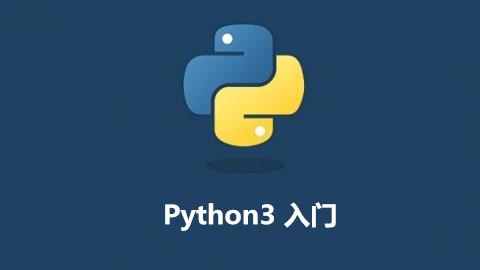内置函数-作用域-闭包-递归
1.几个可能用到的内置函数
查看内置函数: print(dir(__builtins__))常见函数: len 求长度 min 最小值 max 最大值 sorted 排序,从小到大 reversed 反向 sum 求和进制转换: bin() 转换为二进制 oct() 转换为八进制 hex() 转换为十六进制 ord() 将字符转换成对应的ASIIC码值 chr() 将ASIIC码值转换成对应的字符补充: 1.enumerate() 返回一个可以枚举的对象 2.filter() 过滤器 3.map() 加工。对于参数iterable中的每个元素都应用fuction函数,并返回一个map对象 4.zip() 将对象逐一配对1.1 查看参数使用: >>> help(sum)Help on built-in function sum in module builtins:sum(iterable, start=0, /) Return the sum of a 'start' value (default: 0) plus an iterable of numbers When the iterable is empty, return the start value. This function is intended specifically for use with numeric values and may reject non-numeric types. >>> sum((1,23,4)) 28 >>> sum([1,2,3]) 6 >>> sum([1,2,3],10) 16 >>> sum([10,20,30],20) #值=iterable值+start值 80 >>> sum([10,20,30],22) #值=iterable值+start值 82 >>> sum({1:12,2:30}) #key相加 31.2 二进制: >>> bin(1) '0b1' >>> bin(2) '0b10'1.3 八进制: >>> oct(8) '0o10' >>> oct(12) '0o14'1.4 十六进制: >>> hex(10) '0xa' >>> hex(9) '0x9' >>> hex(15) '0xf'1.5 将ASIIC码转换成相应的字符 >>> chr(65) 'A' >>> chr(32) ' '1.6 将字符转换成ASIIC码 >>> ord('a') 97 >>> ord(' ') 321.7 enumerate: >>> help(enumerate) Help on class enumerate in module builtins: class enumerate(object) | enumerate(iterable[, start]) -> iterator for index, value of iterable | | Return an enumerate object. iterable must be another object that supports | iteration. The enumerate object yields pairs containing a count (from | start, which defaults to zero) and a value yielded by the iterable argument. | enumerate is useful for obtaining an indexed list: | (0, seq[0]), (1, seq[1]), (2, seq[2]), ... | | Methods defined here: | | __getattribute__(self, name, /) | Return getattr(self, name). | | __iter__(self, /) | Implement iter(self). | | __new__(*args, **kwargs) from builtins.type | Create and return a new object. See help(type) for accurate signature. | | __next__(self, /) | Implement next(self). | | __reduce__(...) | Return state information for pickling. >>> enumerate([1,2,3,4]) <enumerate object at 0x000000000343EF78> #返回一个迭代器 >>> list(enumerate([1,2,3,4])) #查看 [(0, 1), (1, 2), (2, 3), (3, 4)] #返回一个带索引的可枚举对象,index默认0,也可指定 >>> list(enumerate(['a','b','c','d'])) [(0, 'a'), (1, 'b'), (2, 'c'), (3, 'd')] #返回一个带索引的可枚举对象,index默认0,也可指定 >>> list(enumerate(['a','b','c','d'],3)) [(3, 'a'), (4, 'b'), (5, 'c'), (6, 'd')] >>> list(enumerate((1,23,4,5,6),3)) [(3, 1), (4, 23), (5, 4), (6, 5), (7, 6)] >>> list(enumerate({1,2,3,4,5},3)) #返回一个伪索引 [(3, 1), (4, 2), (5, 3), (6, 4), (7, 5)] >>> list(enumerate({1:2,2:3,3:4},3)) #按可以返回 [(3, 1), (4, 2), (5, 3)]1.8 filter 过滤器 >>> help(filter) Help on class filter in module builtins: class filter(object) | filter(function or None, iterable) --> filter object | Return an iterator yielding those items of iterable for which function(item) | is true. If function is None, return the items that are true. | Methods defined here: | __getattribute__(self, name, /) | Return getattr(self, name). | __iter__(self, /) | Implement iter(self). | __new__(*args, **kwargs) from builtins.type | Create and return a new object. See help(type) for accurate signature. | __next__(self, /) | Implement next(self). | __reduce__(...) | Return state information for pickling. >>> filter(lambda x:x>2,[1,2,3,4,5]) #lambda x:x>2是个函数体 <filter object at 0x0000000003420EB8> #返回函数体 >>> list(filter(lambda x:x>2,[1,2,3,4,5])) [3, 4, 5] >>> list(filter(None,[1,2,3,4,5])) [1, 2, 3, 4, 5]1.9 map加工 >>> help(map) Help on class map in module builtins: class map(object) | map(func, *iterables) --> map object | Make an iterator that computes the function using arguments from | each of the iterables. Stops when the shortest iterable is exhausted. | Methods defined here: | __getattribute__(self, name, /) | Return getattr(self, name). | __iter__(self, /) | Implement iter(self). | __new__(*args, **kwargs) from builtins.type | Create and return a new object. See help(type) for accurate signature. | __next__(self, /) | Implement next(self). | __reduce__(...) | Return state information for pickling. >>> list(map(str,[1,2,3,4])) ['1', '2', '3', '4']1.10 zip 将对象逐一配对 >>> list(zip([1,2,3],[4,5,6])) [(1, 4), (2, 5), (3, 6)] >>> list(zip((1,2,3),(4,5,6))) [(1, 4), (2, 5), (3, 6)] >>> list(zip([1,2,3],(4,5,6))) [(1, 4), (2, 5), (3, 6)] >>> list(zip([1,2,3,4],[5,6,7,8,9],['a','b'])) [(1, 5, 'a'), (2, 6, 'b')]2.函数内变量的作用域
变量的作用域与其定义的方式有关: 局部变量:变量在函数内部定义,则变量的作用域在函数内部 全局变量:变量在函数的外部定义,则变量的作用域是全局 global:用来在函数或其它局部作用域中,声明全局变量.(作用于全局) nonlocal:用在函数或其它作用域中,声明外层(非全局)变量。(作用于局部)使用global情况: 全局变量可以在函数内部访问,但 不能改变 如果在函数内部想修改全局变量,可以使用global来修饰变量 局部变量只能在局部进行访问和修改 如果在函数外部,想访问局部变量,也可以使用global,将局部变量声明为全局变量使用nonlocal的情况: 当里层局部,需要修改外层局部时,需要使用nonlocal。(如:嵌套函数)总结: global: 函数中,需要修改全局变量时使用 nonlocal:当里层局部,需要修改外层局部时,使用。(局部调用局部,使用nonlocal)2.1 全局、局部变量 x=1 #全局变量,全局能被局部引用,但不能被局部修改 def fun(): y=2 #局部变量不能进入全局 print(x,y)2.2 局部修改全局变量,使用global x=1 def fun(): global x #先声明 x += 1 print(x)2.3 全局调用局部变量,使用global def fun(): global x x = 1 print(x)2.4 局部变量 def test(): a=1 #局部外层变量 print(a) def test2(): b=2 #局部里层变量 print(a,b) test2() #没有此行,只输出test()。test2()不输出 >>> test() 1 1 2 2.5 局部里层修改局部外层: def test(): a=1 #局部外层 print(a) def test2(): b=2 #局部里层 nonlocal a #声明为局部变量 a += 1 #修改变量 print(a,b) test2() >>> test() 1 2 2
3.内嵌函数和闭包
嵌套函数: def test(): a=1 print(a) def test2(): b=2 nonlocal a a += 1 print(a,b) test2() #嵌套函数调用内嵌函数 闭包<两个函数,嵌套>: def test(): a=1 print(a) def test2(): b=2 print(b) return test2 #返回里层函数的函数体-闭包 >>> test() 1 <function test.<locals>.test2 at 0x00000000005B7F28>回调函数<两个函数,不嵌套>: def test1(): print('first') def fun(a): a() print('two') fun(test1) ================== RESTART: C:\Users\xinyu\Desktop\test.py ================== first two4.递归
函数调用自己本身'''例题:有5个人坐在一起,问第五个人多少岁?他说比第4个人大2岁。 问第4个人岁数,他说比第3个人大2岁。 问第三个人,又说比第2人大两岁。 问第2个人,说比第一个人大两岁。 最后问第一个人,他说是10岁。 请问第五个人多少岁?'''递归的核心: 1.递归推导式 2.递归终止条件def age(n): if n == 1: return 10 else: return age(n-1)+2阶乘: 5!=5*4*3*2*1#n != n*(n-1)*(n-2)*....1def jicheng(n): if n == 1: return 1 else: return jicheng(n-1)*n

 随时随地看视频
随时随地看视频



